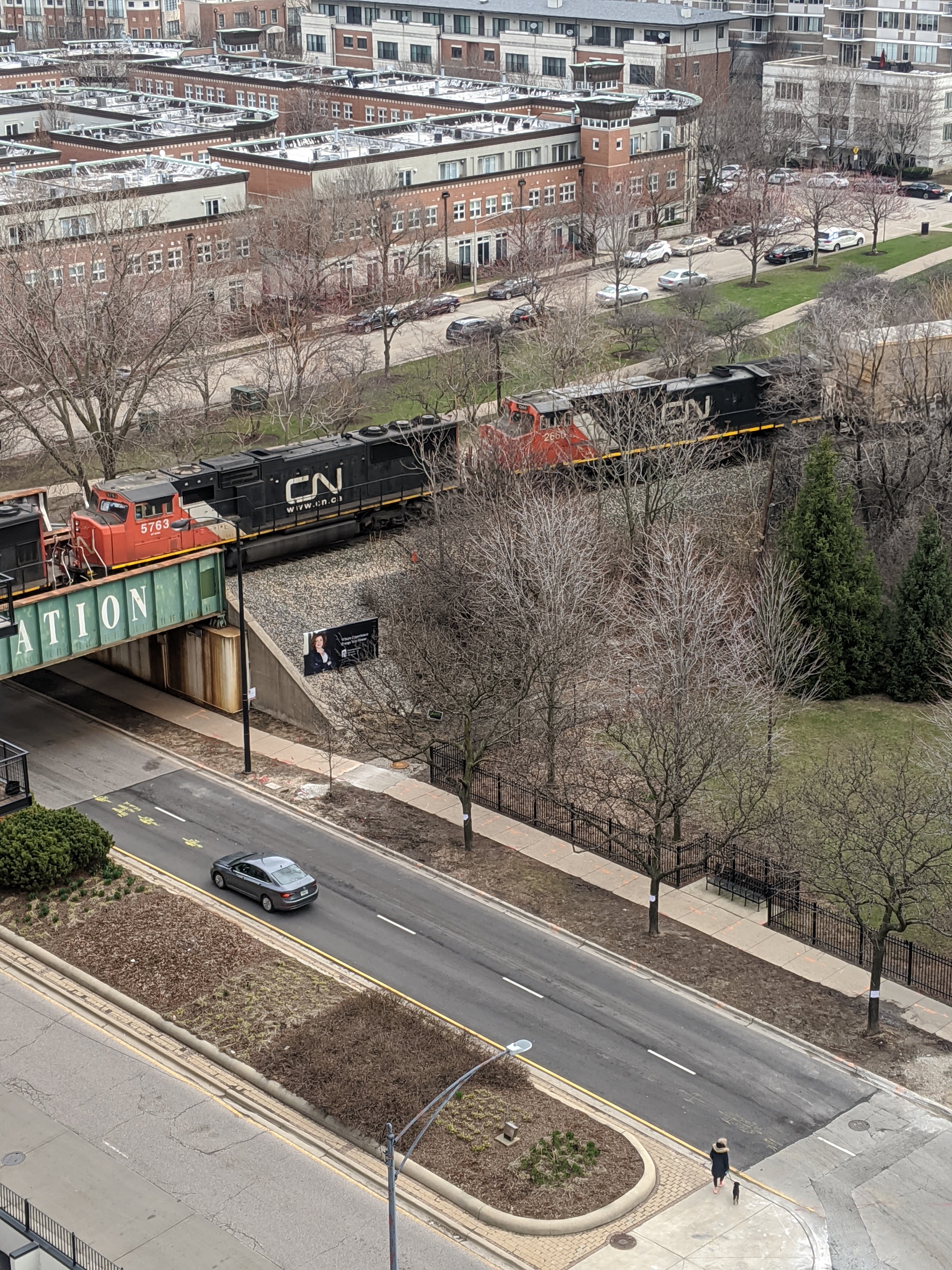 "Dwhite - Powered by Caffeine, Daft Punk, and Corgis" (Dwhite95)
"Dwhite - Powered by Caffeine, Daft Punk, and Corgis" (Dwhite95)
03/30/2020 at 11:07 • Filed to: None
 0
0
 10
10
 "Dwhite - Powered by Caffeine, Daft Punk, and Corgis" (Dwhite95)
"Dwhite - Powered by Caffeine, Daft Punk, and Corgis" (Dwhite95)
03/30/2020 at 11:07 • Filed to: None |  0 0
|  10 10 |
Anyo ne know the reason for why these freight trains look to be running multiple “engine” cars?
When I see these going by there are typically 2-4 of these locomotive cars at each end of the line and it’s always intrigued me as to why.

 For Sweden
> Dwhite - Powered by Caffeine, Daft Punk, and Corgis
For Sweden
> Dwhite - Powered by Caffeine, Daft Punk, and Corgis
03/30/2020 at 11:11 |
|
A few options
Moving the locomotives around
They need a BIG push
 I like cars: Jim Spanfeller is one ugly motherfucker
> Dwhite - Powered by Caffeine, Daft Punk, and Corgis
I like cars: Jim Spanfeller is one ugly motherfucker
> Dwhite - Powered by Caffeine, Daft Punk, and Corgis
03/30/2020 at 11:12 |
|
They could be running push-pull, or the rail may be transporting engines to a different depot.
 ttyymmnn
> Dwhite - Powered by Caffeine, Daft Punk, and Corgis
ttyymmnn
> Dwhite - Powered by Caffeine, Daft Punk, and Corgis
03/30/2020 at 11:12 |
|
Moar powah? Transferri ng engines from one place to another where they are needed?
 TheRealBicycleBuck
> Dwhite - Powered by Caffeine, Daft Punk, and Corgis
TheRealBicycleBuck
> Dwhite - Powered by Caffeine, Daft Punk, and Corgis
03/30/2020 at 11:13 |
|
All of the engines can be controlled from one engine, so when they are hauling heavy loads, they can bring more horsepower to the equation. If what you are seeing is small trains with multiple engines, they may be moving them to different locations either in preparation for pulling a big load or for maintenance.
 TRivet
> Dwhite - Powered by Caffeine, Daft Punk, and Corgis
TRivet
> Dwhite - Powered by Caffeine, Daft Punk, and Corgis
03/30/2020 at 11:14 |
|
I have no actual knowledge as to why, but my assumption would be one of the following:
1. Multiple engines used for long/heavy trains where more power is needed
2. The engines are needed elsewhere and are simply “cargo” in these cases
My best guesses....
 WilliamsSW
> Dwhite - Powered by Caffeine, Daft Punk, and Corgis
WilliamsSW
> Dwhite - Powered by Caffeine, Daft Punk, and Corgis
03/30/2020 at 11:18 |
|
Any long train needs the extra power to get going and make its schedule. They also often need extra dynamic braking effort (This is why you’ll see extra locomotives on long downhills).
In addition, long heavy trains need to distribute power in hilly, curving territory - some of the energy needs to be pushing, not pulling, or the train will derail.
Finally, sometimes they're just moving locos to where they're needed.
Whatever the configuration, it's usually controlled by the lead loco (though pushers often have an engineer on board)
 Demon-Xanth knows how to operate a street.
> Dwhite - Powered by Caffeine, Daft Punk, and Corgis
Demon-Xanth knows how to operate a street.
> Dwhite - Powered by Caffeine, Daft Punk, and Corgis
03/30/2020 at 11:36 |
|
In mountainous areas they can even have the situation of the lead locomotives dragging and the back ones pushing as they crest a ridge to limit the pulling apart forces of the train. More locos also distribute the traction. If they are in the middle it’s likely that it was two trains that became one, and will separate down the line. But one train is easier on the logistics than two.
 wafflesnfalafel
> WilliamsSW
wafflesnfalafel
> WilliamsSW
03/30/2020 at 11:53 |
|
yeah - it’s pretty cool what they can do with multiple unit control now. All our unit coal trains up here run with two units up front and two DPUs on the back, controlled by just a couple folks from one unit.
 RallyDarkstrike - Fan of 2-cyl FIATs, Eastern Bloc & Kei cars
> Dwhite - Powered by Caffeine, Daft Punk, and Corgis
RallyDarkstrike - Fan of 2-cyl FIATs, Eastern Bloc & Kei cars
> Dwhite - Powered by Caffeine, Daft Punk, and Corgis
03/30/2020 at 12:00 |
|
Likely weight....long trains, especially when loaded are HEAVY, so multiple engines may be needed to run the train effectively. Engines can be ‘slaved’ together so that multiple engines can be controlled from one engine for ease of use.
May also be moving some engines from one location to a needed location elsewhere.
 WilliamsSW
> wafflesnfalafel
WilliamsSW
> wafflesnfalafel
03/30/2020 at 12:24 |
|
Yep. Much better train control with some of the power further back.
Most I’ve seen on 1 train was 9. 5 at the head end, 4 more about 2/3 of the way back, on the Sierra Nevada. Back then, the Southern Pacific was operating on a shoestring, and the RFE (who I was with at the time) was adding extra engines, knowing there was a good chance one or more would be dead before they reached Reno.